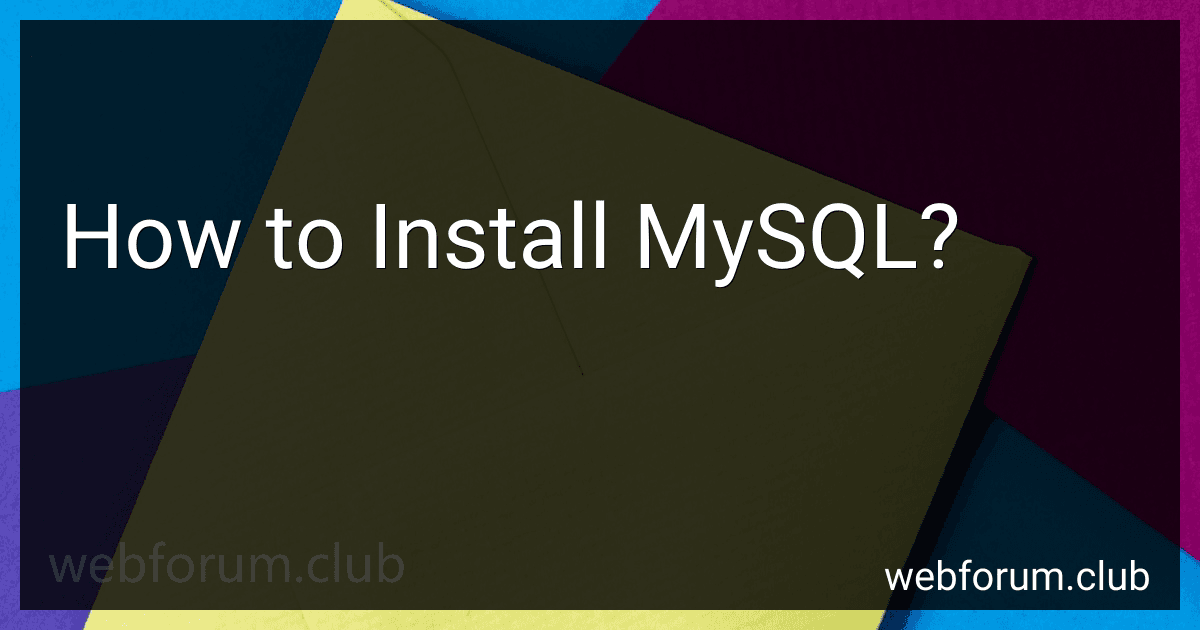To install MySQL, you can follow these steps:
- Go to the official MySQL website and navigate to the Downloads section.
- Choose the version of MySQL that is compatible with your operating system.
- Click on the download link to save the installation file on your computer.
- Once the download is complete, locate the installation file and double-click on it to start the installation process.
- Follow the on-screen instructions to proceed with the installation.
- Select the installation type (typically you would choose "Custom").
- Choose the components you want to install, such as MySQL Server, MySQL Workbench, or other tools.
- Decide whether to choose a Standalone MySQL Server or a Custom setup, depending on your requirements.
- Choose the installation folder where MySQL will be installed. You can use the default folder or specify a different one.
- Set a password for the MySQL root account. Make sure to choose a strong and secure password.
- Configure the server settings based on your preferences. MySQL usually has default settings that work for most use cases.
- Choose whether to install MySQL as a Windows Service, which enables it to start automatically when your computer starts.
- Complete the installation process and wait for it to finish.
- Once the installation is complete, MySQL will be ready to use. You can access it through the command line or by using a graphical user interface tool like MySQL Workbench.
Remember to consult the official MySQL documentation for detailed instructions specific to your operating system if you encounter any issues during the installation process.
How to install MySQL server?
To install MySQL server, you can follow these steps:
- Open a web browser and go to the official MySQL website.
- Click on the "Downloads" tab.
- On the Downloads page, scroll down to the MySQL Community Server section.
- Click on the "Download" button next to the version of MySQL server that is compatible with your operating system.
- Choose the appropriate installer package for your operating system (Windows, macOS, or Linux).
- Once the installer package is downloaded, run the installer.
- Follow the on-screen instructions to complete the installation process. You may need to accept the license agreement, choose an installation directory, and choose the components to install.
- During the installation process, you will be prompted to set a root password for the MySQL server. Make sure to choose a strong password and remember it.
- After completing the installation, start the MySQL server. The process for starting the server may vary depending on your operating system.
- Once the server is running, you can connect to it using a MySQL client or the command line. Use the root username and the password you set during the installation process.
That's it! You have successfully installed MySQL server on your system.
What is MySQL service name?
The MySQL service name is typically referred to as "mysql".
How to install MySQL on CentOS?
To install MySQL on CentOS, follow these steps:
- Update your system: sudo yum update
- Run the following command to install MySQL: sudo yum install mysql-server
- Start the MySQL service: sudo systemctl start mysqld
- Enable the MySQL service to start on boot: sudo systemctl enable mysqld
- Run the following command to secure the MySQL installation: sudo mysql_secure_installation This will prompt you to configure the MySQL root password and perform some security-related settings.
- Access the MySQL command-line by running: sudo mysql You can now manage your MySQL databases and users using the command-line interface.
Congratulations! You have successfully installed MySQL on CentOS.
